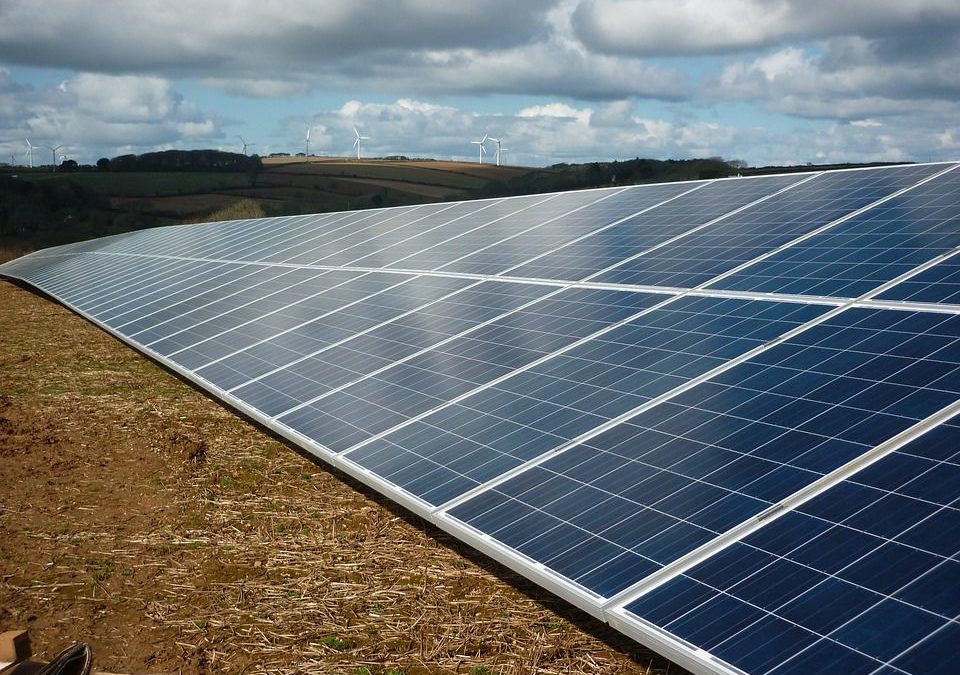In late December, Mayor Jim Kenney signed legislation planned to significantly advance climate action efforts in Philadelphia.
Spearheaded by the City’s Office of Sustainability, the desire is to move all city-run offices toward 100 percent renewable electricity for all City buildings by 2030. The City owns or manages approximately 600 buildings, including office buildings, libraries, police stations, recreation, and health centers.
The bill authorizes the City to enter into a contract with the Philadelphia Energy Authority, that will, in turn, enter into a roughly 20-year power purchase agreement with Community Energy, LLC., a Radnor-based private energy company. Community Energy will build a 70-Megawatt utility-scale solar facility on 700 acres of vacant land in Adams County, 100 miles west of Philadelphia.
This facility will be seven times larger than the next largest solar array in Pennsylvania and will generate enough power to provide 22 percent of the electricity consumed by city government buildings.
Community Energy has already built and financed solar projects in 10 states and in addition to Pennsylvania, the company also has developed a number of wind energy facilities. According to its CEO Brent Alderfer, “we have the technology to take on climate change. What we haven’t had is the leadership to take it on. Philadelphia’s recent commitment, however, demonstrates much-needed leadership on climate change in Pennsylvania.”
The deal represents one of the largest power-purchase agreements between an American city and a renewable energy provider. A national survey conducted in 2017 found that 32 other cities, including Washington, D.C., and Houston, have signed similar long-term agreements to purchase renewable-powered electricity.
According to OOS Director, Christine Knapp, “we already are in discussions with other large institutions in Philadelphia that are interested in pursuing power-purchase agreements, which willhelp advance our citywide climate goals.”
Recently, SEPTA, the city’s transportation authority, issued a request for proposals from energy companies that would enable it to purchase 10 to 20 percent of its energy needs from a renewable source; this would be significant since SEPTA is one of the largest consumers of energy in the Philadelphia region.
The City has completed or is currently undertaking a wide variety of energy-efficiency projects designed to reduce energy consumption, costs, and carbon emissions. One of its first major projects included four large downtown office buildings – City Hall, the Municipal Services Building, One Parkway Center, and the Criminal Justice Center—at a cost of $12.2 million, all funded by a municipal bond. The project included updates to all lighting and operating systems in these buildings. It has resulted in $1.4 million in annual savings, according to the OOS.
A second major project, funded by an $11 million bond, is well underway at the Philadelphia Museum of Art—the largest energy consumer among all City buildings. Work includes upgrades to the operating systems and lighting. The Rodin Museum and the Perelman Building annex are also part of this undertaking. According to the OOS, the project is expected to save $766,000 a year upon completion.
OOS manages the Energy Efficiency and Sustainability Fund using Capital Budget allocation. OOS distributes these funds to other city departments on a competitive basis in support of smaller energy-efficiency projects at municipal buildings. To date, the Fund has saved approximately $1.7 million in energy costs.
The City has replaced sodium street lights with LED lights on some streets; these lights are more energy efficient, last longer and, when paired with a computerized control system, provide better illumination for drivers, pedestrians and bikers.
Switching the rest of Philadelphia’s street lights to LED lights remains a high priority.
Mayor Kenney’s Rebuild Initiative, or “Rebuild,” will invest $500 million in the coming years to repair and upgrade City parks and recreation centers, playgrounds, and libraries. This initiative will be largely funded through long-term city-issued bonds, including bonds backed by revenues raised by the Beverage Tax, as well as a grant from the William Penn Foundation. Late last year the City announced the first round of 13 projects.As buildings are updated, they will be designed to be energy efficient and resilient to the changing climate.
__
“We have the technology to take on climate change. What we haven’t had is the leadership to take it on.”
– Community Energy CEO, Brent Alderfer
__
In 2018, Philadelphia City Council amended the building code to require all new commercial and multi-family buildings built in the city to comply with energy-efficiency standards that will ensure better insulation, lighting systems that use less energy, and windows that screen out more heat. These requirements could increase energy efficiency in new buildings by as much as 30 percent.
As a result of all these undertakings, the City’s carbon footprint already has been reduced by approximately 17 percent over the past decade. A recent study by the American Council for an Energy-Efficient Economy ranked Philadelphia 12th among 51 of the largest cities in the country for its energy-efficiency efforts.
Under Pennsylvania’s “power-switch” program, residents and businesses can switch to a supplier of 100 percent renewable-powered electricity. As of July 2017, 34 percent of residential customers in PECO’s territory (which includes Philadelphia) had switched to a renewable electricity supplier.
The Philadelphia Energy Authority runs a city-wide program, known as “Solarize Philly,” that offers free solar assessments and discounted pricing for homeowners who install rooftop solar panels; the more customers who sign contracts, the deeper the discounts. To date over 3,500 households have signed up, and over 200 contracts have been completed for the work. The City is studying opportunities for further solar projects on municipal rooftops and city-owned lands as well.
Despite all these initiatives, scientists say global warming is occurring faster than previously forecasted with global climate change is running at a rapid pace.
A scientific study, released last November by the United Nations Intergovernmental Panel on Climate Change, reported that global carbon emissions increased by almost 3 percent last year. The study concluded that if emissions continue to rise at this rate the world is likely to see the onset of a global environmental crisis as early as 2030.
William Hengst is a retired city planner. He can be contacted at yardman3b@gmail.com




